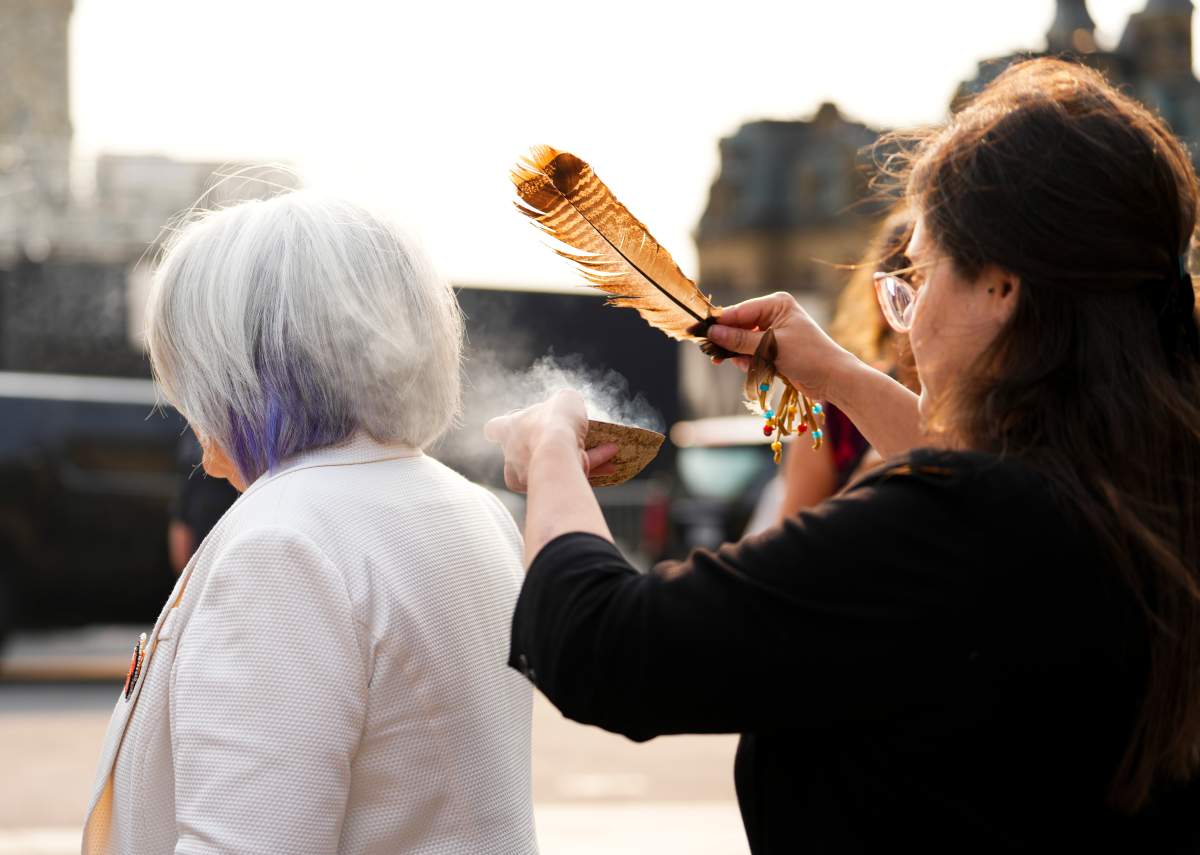Looking for more Indigenous news? Find our stories here.

Tasha Jacko was taught to honour Grandfather Sun every summer solstice.
“We would start off the day with a pipe ceremony and a sunrise ceremony,” she said. “So you would arrive right before the sun came up and … once you’re in the presence (of a pipe carrier) you’re going to be taught the proper knowledge because there is certain knowledge that they have to have to hold, to carry that pipe.”
While ceremonies are unique to different communities and nations, a pipe ceremony is typically done to offer blessings and a sunrise ceremony marks a new beginning as well as an appreciation for Mother Earth.
Every year, the summer solstice takes place on or close to June 21 and since 1996, so too does National Indigenous Peoples Day. Events are held across the country and all cultures are welcome, but it’s also seen as an opportunity for some to learn.

What is Summer Solstice?
A member of the Anishinabek Nation, Jacko grew up in Toronto around family and community. On each solstice, they would have a feast, gathering and share teachings.

Get daily National news
“I was taught … it’s the longest day of the year, so after today, everything goes into reverse,” she said. “And the summer solstice is to honour the sun and all of the crops and plants and life it brings into the summer months.”
“It helps us to understand our role to the Earth through stories about the summer months and Grandfather Sun.”
“It’s important to share our ceremonies and teachings because it gives an understanding of our relationship to the land as Indigenous people,” Jacko said. “Our recent identity is all based around trauma and that’s how people view us. … We’re not just all about trauma. A lot of us are reconnecting Indigenous people, to our ceremonies and our duties to the land.“
Rae-Anna Whiteduck, cultural ambassador at Mādahòkì Farm in Ottawa, said learning is an important part of the summer solstice.
“It’s a really exciting time for us to come together and really learn, moving forward with reconciliation and creating that safe place for Indigenous people as well as non-Indigenous people,” Whiteduck said.

The solstice signifies the beginning of summer and is the longest day of the year as well as the start of the social season for many nations.
“We still honour those sacred beginnings, and we still try to hold that near and dear in all of the celebrating that we do,” she said. “The solstice … festival kind of kicks off the powwow season, if you will, so this is a time where we will travel to different communities and different nations will share their culture and the way they did things.”
The Summer Solstice celebrations at Mādahòkì Farms are a time of coming together; they include education days, a competition powwow, performances and various culture showcases — like Metis jigging.
“Coinciding with National Indigenous Peoples Day … it’s a good way to kind of come together and to celebrate the bravery and the strength of our people or the original people of these territories,” Whiteduck said.

Jacko said there’s a lot to be gained from ceremonies during solstice as it helps Indigenous people to have deeper connections with the land and their identity.
And while a time for learning, Jacko said it’s important to “celebrate our resilience.”
“We need to celebrate to recognize our people. … We are a generation that is moving forward. A lot of us are turning back to reconnecting with our ceremonies or our ways of life.”









Comments